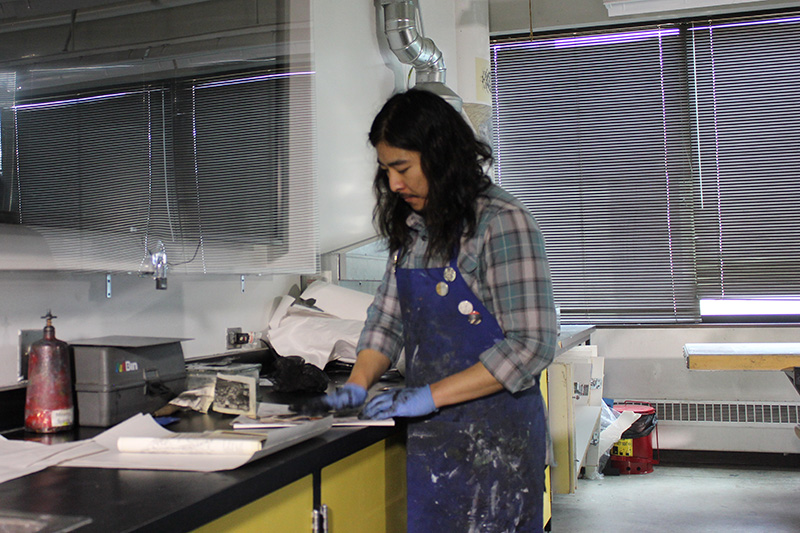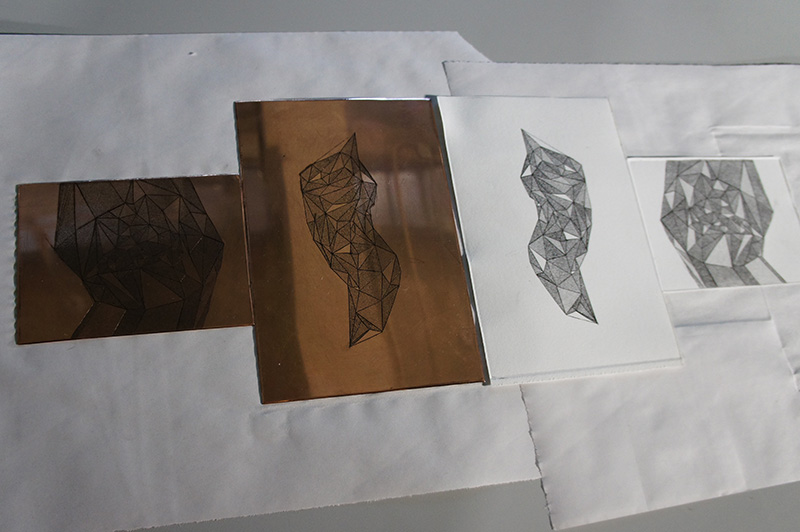This blog is one of a six-part series highlighting the processes behind printmaking and the art shown in the exhibition that was on view May 26 – July 22, 2017, titled 528.0 See our YouTube channel for more printmaking videos over the coming weeks.
Intaglio printmaking is a complex printmaking process that involves etching, engraving, scraping, burnishing, and much more. MSU Denver BFA Printmaking graduate Peter Miller demonstrates these various techniques on a copper plate as they create an original print from their designs. This process allows the printmaker to create intricate images with a process historically used for banknotes, newspapers, fabrics, and sheet music.

The lines that the printmaker would like printed are either cut into the metal plate with a tool called a burin (a process known as engraving), or by using acid to corrode the plate (known as etching). Ink is then forced into the incised lines and wiped clean from the surface of the plate with a tarlatan and newsprint. Another key difference with intaglio versus other printmaking processes is that the paper is soaked in water and patted dry before printing. This allows the pressure applied by the press to lift the ink from the grooves and apply it to the paper. This can also emboss the paper causing it to raise where the lines were carved. Intaglio can produce detailed images with various line work and techniques as demonstrated in the video.

How can a contemporary artist mix the process of lithography with other printmaking processes?
